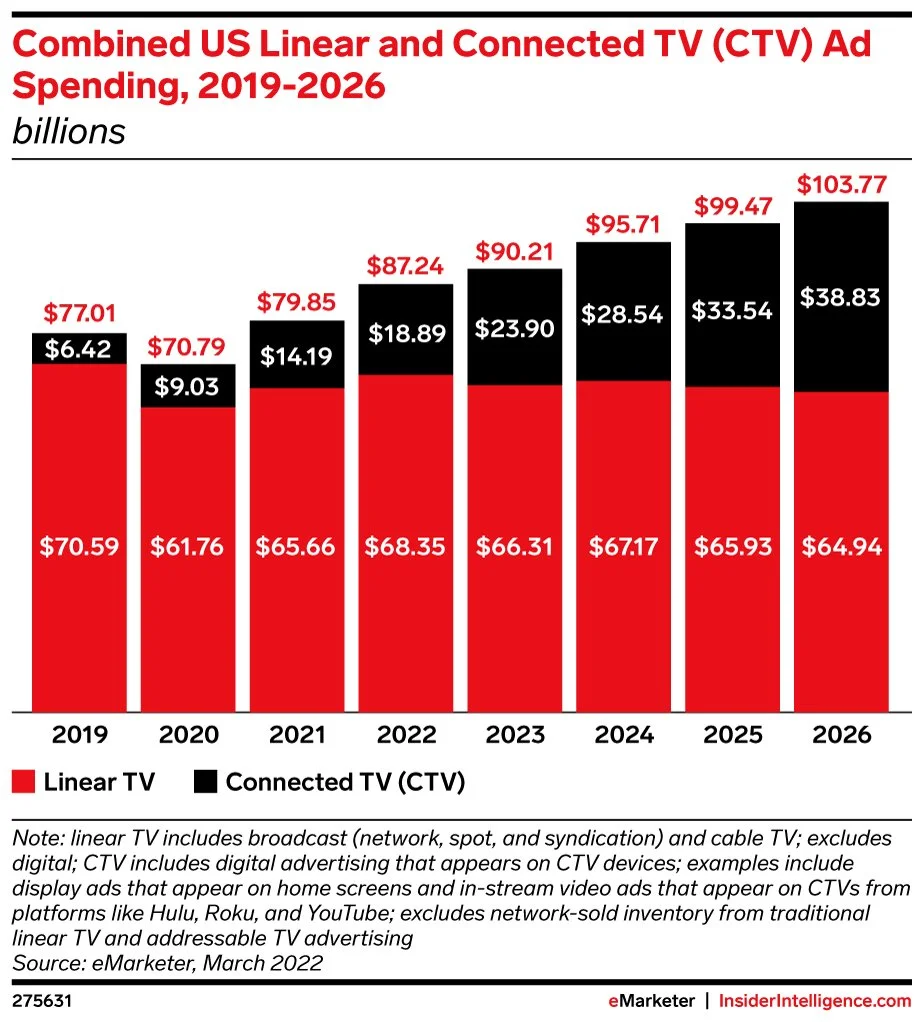It’s The Audience (Not The Device), Stupid
It’s hard to spend ten minutes reading press about advertising or marketing without discussion of CTV and the migration of audiences away from traditional linear TV to a new digital equivalent. However popular this David and Goliath storyline may be, it’s oversimplified. Rather than a straight shift from “legacy TV” to CTV, we’re likely to see video-viewing split between three different buckets for years to come. And the key to success for marketers is to focus on the audiences, not the devices or delivery mechanism.
The death of linear TV has been greatly exaggerated. If we look at eMarketer data from March 2022, what we actually see is a slight uptick for linear TV from last year, and small single-digit percent year-over-year variances predicted through 2026.
One wildcard is the potential shift of sports viewership – particularly American football – which skews toward traditional linear broadcast, and hence we see the NFL streaming rights hotly contested by a handful of companies that hope to benefit from the shift to streaming.
Meanwhile, digitally-delivered video is on the rise, to the point that digital video viewing time is expected to surpass traditional TV viewing time in 2024 per eMarketer.
It’s important to understand that this bucket is not comprised entirely of CTV and OTT viewership. It also includes video views on mobile and desktop video, and non-CTV digital video is a sizeable chunk of the audience – larger than its CTV counterpart.
Which is not to say CTV can be ignored. It certainly cannot, as ad spend projections continue to ratchet upwards, and the big screen fully immersive experience on TV devices will likely remain the gold standard for grabbing audience attention.
Lastly, and this is clearest seen with the rapid rise of TikTok – which bills itself an entertainment platform rather than a social network – audiences are spending a significant amount of the video viewing time within apps like TikTok, Instagram, Facebook, Snap, Twitter, LinkedIn and Pinterest. If you look at digital video ad spend overall from eMarketer's March 2022 report, social video is a huge component -- larger than CTV in today’s market.
At the end of the day, the important takeaway is that the way consumers view content and what most influences their purchasing behavior is not static. Marketers need to reach their audiences wherever they are consuming content, and today’s equivalent to the cross-generational TV viewing audience of yesteryear is now dispersed across multiple channels and devices. Reaching that audience requires coverage of linear TV, CTV, and digital video across non-TV devices, including social video.






